Buddha Images in the Chiang Saen style
The Chiang Saen or Lanna style (between 11th and 18th centuries A.D.) was influenced by the styles of the Khmer, Sukhothai, India, Burma and Sri Lanka.
Buddha images typically feature a lotus bud or orb shaped finial and large hair curls. The torso is plump, with a slim waist line. The face is round and smiling, with high curving highbrows, a hooked nose and mostly narrow lips.
In later period, under influence of Sukhothai, the head had finer hair curls, an extended lotus shaped or flame shaped finial, and a thin hair band. As with Sukhothai Buddha images, the face became more oval. The mantle often extended down to the navel.
Sitting Buddhas mostly display the gesture of Subduing Mara. Standing Buddhas often display the gesture of Dispelling Fear or Instruction.
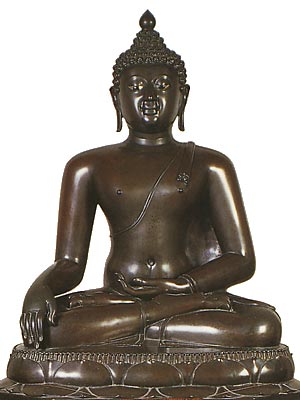
Displaying the gesture of Subduing Mara.
In the style of the Chiang Saen period, found at Chiang Saen, Chiang Rai province.
Image present in the cloister of the Ubosoth at Wat Benchamabophit, Bangkok.
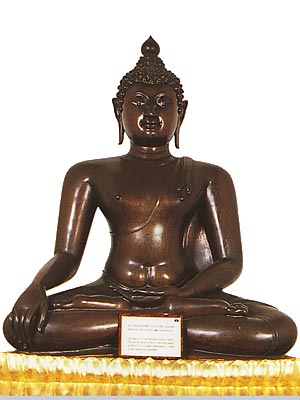
In the style of the Chiang Saen period.
Found at Wat Bang Phlu, Thonburi.
Image present in the cloister of the Ubosoth at Wat Benchamabophit, Bangkok.
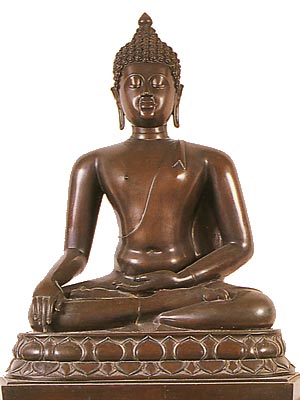
In the style of the Chiang Saen period.
Found at Wat Siri Panya.
Image present in the cloister of the Ubosoth at Wat Benchamabophit, Bangkok.
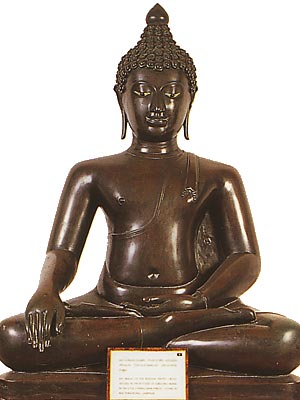
In the style of the Chiang Saen period.
Found at Wat Phra Kong, Lamphun province.
Image present in the cloister of the Ubosoth at Wat Benchamabophit, Bangkok.
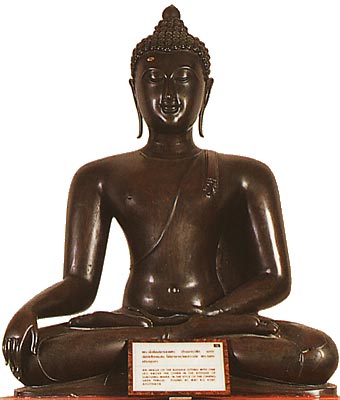
In the style of the Chiang Saen period.
Found at Wat Ko Koet, Ayutthaya province.
Image present in the cloister of the Ubosoth at Wat Benchamabophit, Bangkok.
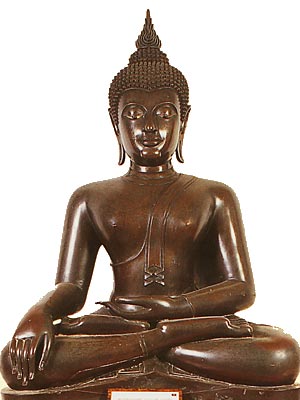
In the style of the Chiang Saen period.
Found at Wat Luang, Phayao province.
Image present in the cloister of the Ubosoth at Wat Benchamabophit, Bangkok.
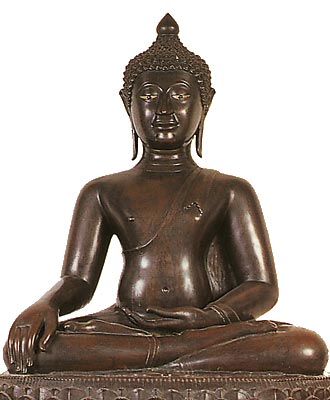
In the style of the Chiang Saen period.
Found in Chiang Mai province.
Image present in the cloister of the Ubosoth at Wat Benchamabophit, Bangkok.
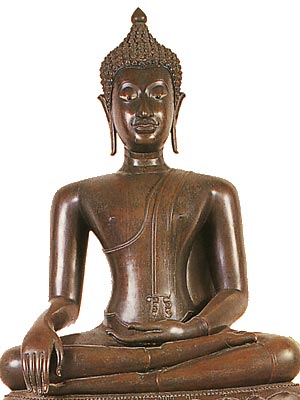
In the style of the Chiang Saen period.
Found at Wat Phra Bat Tak Pha, Lamphun province.
Image present in the cloister of the Ubosoth at Wat Benchamabophit, Bangkok.
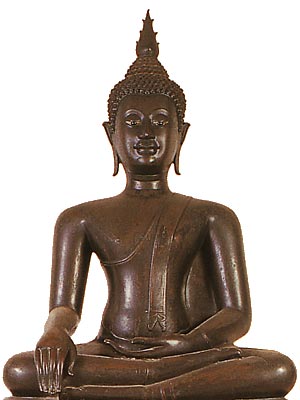
In the style of the Chiang Saen period.
Found at Wat Phra Bat Tak Pha, Lamphun province.
Image present in the cloister of the Ubosoth at Wat Benchamabophit, Bangkok.
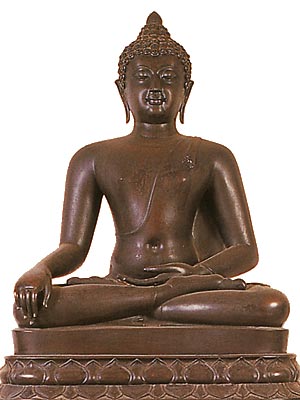
In the style of the Chiang Saen period.
Found at Wat Sawang Arom, Muang Thung Yang, Uttaradit province.
Image present in the cloister of the Ubosoth at Wat Benchamabophit, Bangkok.
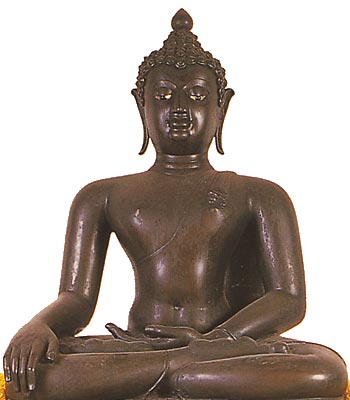
In the style of the Chiang Saen period.
Found at Wat Arun, Thonburi.
Image present in the cloister of the Ubosoth at Wat Benchamabophit, Bangkok.
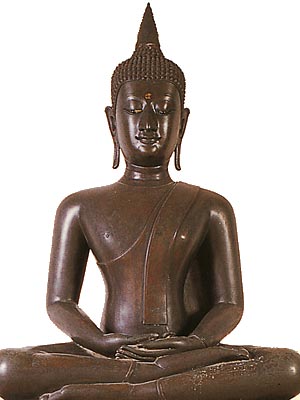
In the style of the Chiang Saen period.
Found at Chiang Saen, Chiang Rai province.
Image present in the cloister of the Ubosoth at Wat Benchamabophit, Bangkok.
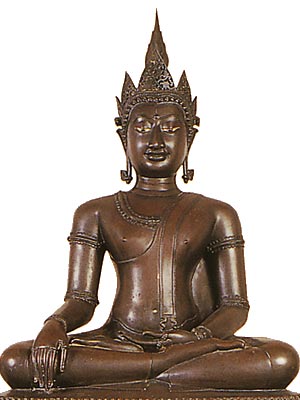
Wearing the attributes of Royalty.
In the style of the late Chiang Saen period.
Found at Wat Mahathat Haripunchai, Lamphun province.
Image present in the cloister of the Ubosoth at Wat Benchamabophit, Bangkok.
![]() Characteristics and Postures of the Buddha
Characteristics and Postures of the Buddha
![]() Sitting Buddhas
Sitting Buddhas
![]() Reclining Buddhas
Reclining Buddhas
![]() Seven Days of the Buddha
Seven Days of the Buddha
Hand Gestures :
![]() The Six Main Mudras
The Six Main Mudras
![]() Dhyana Mudra
Dhyana Mudra
![]() Bhumisparsha Mudra
Bhumisparsha Mudra
![]() Abhaya Mudra
Abhaya Mudra
![]() Vitarka Mudra
Vitarka Mudra
![]() Varada Mudra
Varada Mudra
Historical Periods :
![]() Dvaravati
Dvaravati
![]() Khmer-Lopburi
Khmer-Lopburi
![]() Chiang Saen - Lanna
Chiang Saen - Lanna
![]() Sukhothai
Sukhothai
![]() U Thong
U Thong
![]() Ayutthaya
Ayutthaya
Historical Notes :
![]() Dvaravati
Dvaravati
![]() Sukhothai
Sukhothai
![]() Ayutthaya
Ayutthaya
![]() Resources
Resources
Temples in Thailand :
![]() Overview
Overview
![]() Wat Pho
Wat Pho
![]() Wat Benchamabophit
Wat Benchamabophit
Buddha Images at :
![]() Buddha Images at Wat Phra Pathom Chedi
Buddha Images at Wat Phra Pathom Chedi
![]() Introduction to Buddhism in Thailand
Introduction to Buddhism in Thailand
![]() The 10 Jatakas (lives of the Buddha) as depicted in Thai mural Temple paintings
The 10 Jatakas (lives of the Buddha) as depicted in Thai mural Temple paintings
More about Thailand at ThaiWebsites.com : Articles, and Web Directory
Content by Guido Vanhaleweyk, Bangkok.

.png)